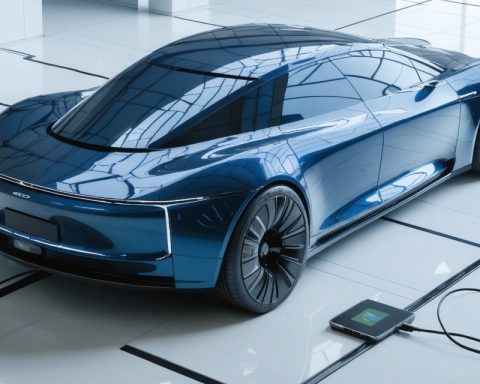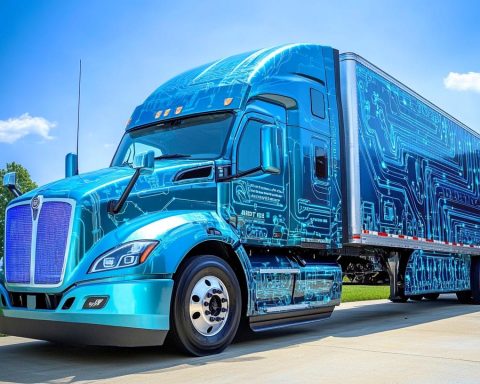- Russia is gradually moving towards automotive electrification, tackling unique challenges in geography and economy.
- The Ministry of Construction mandates that new residential parking areas accommodate electric and hybrid vehicles, encouraging infrastructure development.
- Major urban centers, like Moscow and St. Petersburg, are the focal points of the EV charging station expansion.
- In 2024, electric vehicle sales rose by 26.4%, reflecting increased consumer interest despite the small overall market size.
- Remote regions face significant hurdles due to geographic vastness and cold climates affecting infrastructure and battery technology.
- Russia’s car manufacturing industry struggles with costs and import barriers, making EVs less affordable for many consumers.
- Geopolitical tensions and a limited market hinder foreign investment in local EV production facilities.
- The government’s commitment to subsidies and infrastructure points to an ongoing but challenging journey towards automative modernization and sustainability.
Russia stands poised at the crossroads of automotive transformation, peering into a future where electric vehicles (EVs) may one day reign supreme. But this path is paved with challenges unique to its sprawling geography and entrenched economic structures. The Ministry of Construction’s recent directive to earmark a modest percentage of parking spaces in new residential developments for electric and hybrid vehicles underlines the slowly accelerating push towards electrification. With a requirement for charging stations boasting at least 11 kilowatts, there is a vision to make urban electric mobility a practical reality.
This stride does not mark Russia’s first foray into incentivizing EV infrastructure; government initiatives have unfolded previously, offering subsidies to spur charging station expansions with a goal to dramatically increase numbers by the end of the decade. The epicenter of this activity is understandably Russia’s major urban hubs—Moscow, St. Petersburg, Kazan, Novosibirsk, and Yekaterinburg—where new charging points are blossoming like budding flowers in spring.
On the surface, sales statistics paint a promising picture. According to AUTOSTAT, 2024 witnessed the sale of over 17,800 new electric vehicles, a significant leap from the prior year, reflecting a buoyant 26.4% growth. However, this excitement is tempered by sobering realities. The overall scale remains diminutive; these figures barely eclipse the monthly sales of some individual Chinese car manufacturers. Russia’s breathtaking landscapes, though a pride, simultaneously present hurdles for infrastructure deployment, particularly in remote regions, where electric cars are seldom seen. The challenges are compounded by frigid climates that are less than welcoming to current battery technologies.
But beneath these geographical challenges lies a more profound industry hurdle. Russia’s domestic car manufacturing, still reliant on assembling imported components, struggles to find its competitive edge. High manufacturing costs and policy-driven barriers to imports render EVs prohibitively expensive for many Russian consumers. The ongoing geopolitical situation only adds layers of complexity and risk for foreign investments in local production facilities.
Despite the government’s intentions to lure international players into establishing factories on Russian soil, these efforts are stymied by the limited market size. The unresolved geopolitical tensions with Ukraine further dissuade potential collaborators, posing a formidable barrier to the envisioned electric future.
The crux of this narrative reveals the gap between aspiration and reality: while policies lay the groundwork for a greener automotive landscape, the momentum falters in the face of infrastructural, industrial, and economic constraints. Yet, the commitment to subsidizing EV purchases and the grand vision of a transformed public transport system hint at an unstoppable trajectory towards modernization.
The takeaway is clear: Russia’s path to electrification, albeit slow and challenging, is an essential pivot in a changing world. The modest yet determined steps signal an aspiration to overcome challenges and work towards a more sustainable future, even if the journey is marred by temporary setbacks.
Russia’s Bold Journey Towards Electric Vehicles: Challenges, Opportunities, and the Road Ahead
Russia stands at a pivotal point in its automotive evolution, aiming to embrace electric vehicles (EVs) amidst unique challenges posed by its vast geography and entrenched industrial structures. As we delve deeper, we uncover a multi-faceted landscape shaped by economic realities, technological barriers, and strategic aspirations.
The Current Landscape of EVs in Russia
With over 17,800 new electric vehicles sold in 2024, Russia achieved a 26.4% growth in sales compared to the previous year. However, these promising numbers are dwarfed when juxtaposed with the sales figures of dominant global players like China. For context, this number of sales barely surpasses the monthly sales of individual models in China, where government-backed initiatives have fueled electric mobility at an unparalleled pace.
Barriers to EV Adoption
1. Geographical and Climatic Challenges
Russia’s expansive landscape poses significant challenges for infrastructure development. Vast and remote regions make the deployment of charging stations difficult and economically unfeasible. Additionally, the harsh winter climates in many parts of Russia present technical challenges for current battery technologies, which often see reduced performance in sub-zero temperatures.
2. Manufacturing and Economic Hurdles
The domestic car industry in Russia heavily relies on imported components due to high manufacturing costs and policy-driven import barriers. These factors contribute to the prohibitive costs of EVs, rendering them less accessible to the average Russian consumer.
3. Political and Geopolitical Factors
Ongoing geopolitical tensions, particularly concerning Ukraine, create an uncertain environment for foreign investment, further complicating efforts to establish local manufacturing facilities. These challenges hinder international collaboration, which is crucial for realizing Russia’s electric future.
Steps Towards Electrification
The Russian government is taking concrete steps toward enhancing EV infrastructure by mandating that new residential developments allocate a percentage of parking spaces for EVs and hybrids. Additionally, subsidies for charging stations aim to increase their numbers dramatically by the decade’s end, particularly in urban centers like Moscow and St. Petersburg.
Future Prospects and Recommendations
Despite the hurdles, the trajectory towards electrification in Russia is gaining momentum. Key recommendations for fostering this growth include:
– Enhanced Battery Technology: Investing in research and development to create batteries that perform efficiently in cold climates.
– Incentivizing Local Production: Offering tax benefits and subsidies to encourage domestic manufacturing of EV components to reduce reliance on imports.
– Infrastructure Investment: Prioritizing the establishment of charging stations in urban centers while exploring innovative solutions for remote areas, such as mobile charging units.
– International Collaboration: Engaging in dialogues with international EV manufacturers to bring advanced technology and practices into the Russian market.
Actionable Quick Tips for Consumers
1. Check Incentives: Before purchasing an EV, research available government subsidies and tax incentives that can make your purchase more economical.
2. Plan Charging: Consider your proximity to charging stations and the availability of home charging options when planning to buy an EV.
3. Cold Weather Preparation: Invest in EVs specially designed or modified for cold weather operation to ensure optimal performance.
The transition to electric vehicles is not just a governmental ambition but a necessity in a world moving rapidly towards sustainable solutions. While Russia’s journey is fraught with challenges, the determined efforts signal a willingness to overcome obstacles and strive towards a greener future.
For more insights into the automotive industry and technological trends, visit Autostat or BeeTeeS for expert analyses.















